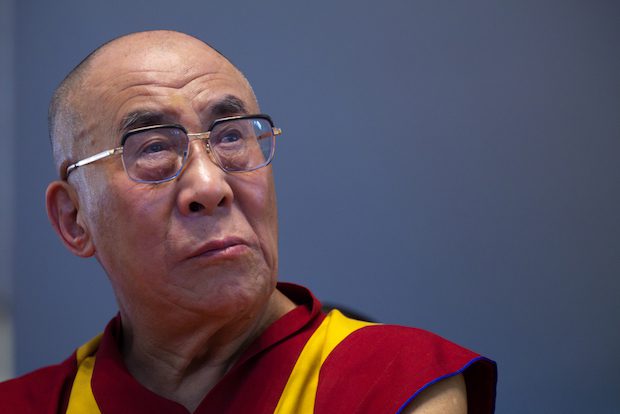The Dark Side Of Tibetan Buddhism

Over the weekend, I ran across this 2010 essay on Reason by Brendan O’Neill, who wrote about his frustration with the way Tibetan Buddhism is whitewashed in Western culture. O’Neill, by the way, is an atheist and a libertarian. Excerpts:
Many Westerners before me have visited Tibet, popped into some monastery on a mountainside, and decided to stay there forever, won over by the brutally frugal existence eked out by Tibetan Buddhists.
I have exactly the opposite reaction. I couldn’t wait to leave the temples and monasteries I visited during my recent sojourn to Shangri-La, with their garish statues of dancing demons, fat golden Buddhas surrounded by wads of cash, walls and ceilings painted in super-lavish colours, and such a stench of incense that it’s like being in a hippy student’s dorm room.
I know I’m not supposed to say this, but Tibetan Buddhism really freaked me out.
The most striking thing is how different real Tibetan Buddhism is from the re-branded, part-time version imported over here by the Dalai Lama’s army of celebrities.
Listening to Richard Gere, the first incarnation of the Hollywood Lama, you could be forgiven for thinking that Tibetan Buddhism involves sitting in the lotus position for 20 hours a day and thinking Bambi-style thoughts. Tibetan Buddhism has a “resonance and a sense of mystery,” says Gere, through which you can find “beingness” (whatever that means).
Watching Jennifer Aniston’s character Rachel read a collection of the Dalai Lama’s teachings in Central Perk on Friends a few years ago, you might also think that Tibetan Buddhism is something you can ingest while sipping on a skinny-milk, no-cream, hazelnut latte.
Or consider the answer given by one of Frank J. Korom’s students at Boston University when he asked her why she was wearing a Tibetan Buddhist necklace. “It keeps me healthy and happy,” she said, reducing Tibetan Buddhism, as so many Dalai Lama-loving undergrads do, to the religious equivalent of knocking back a vitamin pill.
The reality couldn’t be more different.
O’Neill talks about aspects of Tibetan Buddhism that he finds repulsive, but that never get talked about in the West. Then:
Of course, this only means that Tibetan Buddhism is the same as loads of other religions. Yet it is striking how much the backward elements of Tibetan Buddhism are forgiven or glossed over by its hippyish, celebrity, and middle-class followers over here. So if you’re a Catholic in Hollywood it is immediately assumed you’re a grumpy old git with demented views, but if you’re a “Tibetan” Buddhist you are looked upon as a super-cool, enlightened creature of good manners and taste. (Admittedly, Mel Gibson doesn’t help in this regard.)
I am well aware of the fact that I am not the first Westerner to be thrown by Tibet’s religious quirkiness. A snobby British visitor in 1895 denounced Tibetan Buddhism as “deep-rooted devil-worship and sorcery.” It’s no such thing. But what is striking, and what caused me to be so startled by the weirdness, is the way in which this religion has come to be viewed in Western New Age circles as a peaceful, pure, happy-clappy cult of softly-smiling, Buddha-like beings. Again, it’s no such thing. The modern view of Tibetan Buddhism as wondrous is at least as patronizingly reductive as the older view of Tibetan Buddhism as devil-worship.
Read the whole thing. Again, O’Neill’s real beef here is not with Tibetan Buddhism but with the way it is constructed by Western media. I know nothing about Tibetan Buddhism, but regarding religions (Christian and non-Christian) that I do know something about, I find that most mainstream media reporting on it tells us as much about the preferences and biases of the reporter than it does about the religion and its believers.
UPDATE: Judging from the comments, some people think I cited this essay as a way of criticizing Tibetan Buddhism. Not true. I’m quite sure that if I knew more about Tibetan Buddhism, I would criticize plenty of it, while admiring plenty of it. And I’m quite sure that as a cosmopolitan Western atheist libertarian, O’Neill finds much to dislike about Christianity, and would find even more to dislike about more folkish versions of Christian practice. All of that is beside the point. O’Neill is correct to question why Western celebrity and media culture treats Tibetan Buddhism the way it does. This is not the fault of the Dalai Lama.
Subscribe for as little as $5/mo to start commenting on Rod’s blog.